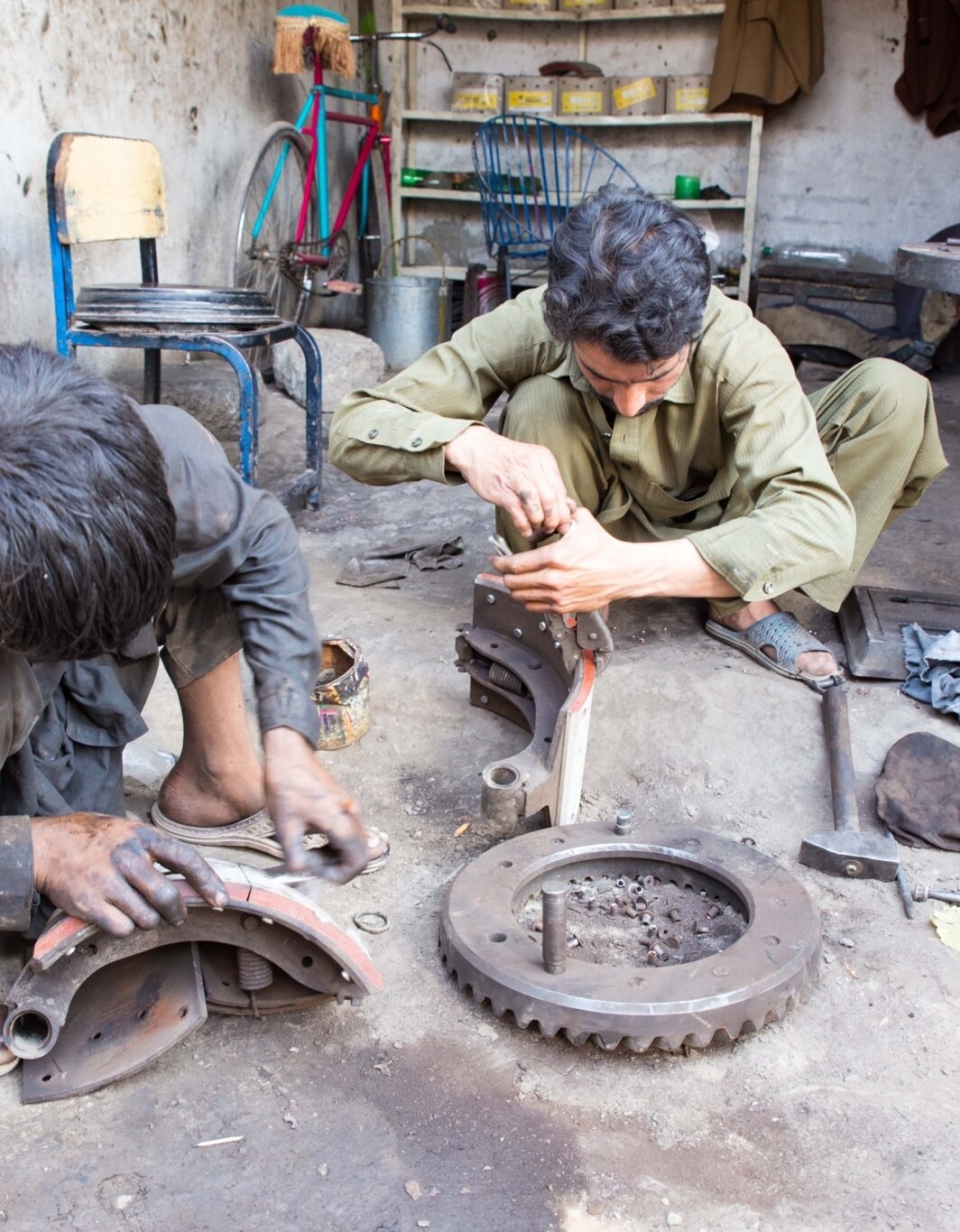Discerning the biggest workplace risks children face in some of the most widespread industries in Afghanistan and helping mitigate the threat by designing contextually relevant Best Practices and Self-Help Guides.
To this day, the practice of child labor (CL) is a widespread problem in Afghanistan. Millions of children are forced to work in hazardous and exploitative conditions, often for little or no pay. They are deprived of their basic rights to education, health, and protection from violence and abuse. Child labor not only harms the physical and mental well-being of the children, but also hinders the social and economic development of the country.
The International Labor Organization (ILO) Afghanistan through the ILO/Japan Fund for Building Social Safety Nets in Asia and the Pacific contracted Adroit Associates to conduct a rapid assessment of child labor in the province of Balkh. The assessment’s aim was to provide up to date information on the level of child labor within three main sectors of employment and to identify any knowledge gaps as related to child labor.
The Challenge
Child labor is a sensitive topic. Many households practice it and would prefer to keep it hidden from prying eyes. This makes it very difficult to locate and interview households and businesses that engage in this practice. Even if you do manage to locate and identify these households and businesses, establishing dialogue with these households and SMEs is a challenge of its own. Though — at its heart — child labor may be an economic issue, It is also stems from cultural and social norms/traditions. Therefore, one needs to exercise extreme care when asking about issues related to child labor. There is also the issue of identifying the biggest risks to children. Child labor is riddled with risks and circling out the biggest risks necessitates that the researcher not only looks at the situation and working conditions from his point of view but from the point of view of the child itself.
Adroit Associates’ delicate yet meticulous approach was just the right solution to this problem.
Project Goals/Objectives Child labor
- Provide updated information on children’s involvement in Electric Welding, Carpet Weaving, and Metal and Wooden works production, its existence, gender dimension, characteristics and conditions of work, recruitment patterns, main hazards and exposure to violence and socio-economic environment where CL occurs.
- Identify knowledge gap.
- Identify the main factors in families and communities that push children into CL in the mentioned sectors and what are those that prevent it.
- Review national efforts to address CL in those sectors and identify best practices and remaining gaps.
- Provide recommendations on how to eliminate and prevent CL in those sectors and to address knowledge gaps.
- Produce, present, and disseminate a report on CL in the mentioned sectors to provide guidance for stakeholders.
The final deliverables included a Rapid Assessment Report, an OSH Best Practices Guide, and a Child Labor Prevention Self-Help Guide.
Our Approach
Collecting data on child labor is very time-consuming. Adroit mitigated this issue by collecting the data in two stages: In the first stage, Adroit performed a mapping exercise where they surveyed a representative sample of communities from various districts in the province. In these surveys, they identified which households and businesses were involved in child labor — and only that. This provided Adroit Associates with a list of households and businesses involved in child labor. With this information, Adroit Associates was able to identify which districts of the province had the highest levels of child labor, where the households and businesses involved in child labor were located, and how many children were working in child labor. Adroit then hand-picked a select number of talented staff members and — with the help of child labor specialists — trained them on how to best conduct interviews and focus group discussions while taking into consideration the delicate nature of the issue.
Results
Adroit’s efficient approach resulted in prompt and effective collection of a large amount of data within the project timeline. The highly trained staff members were able to conduct in-depth interviews and garner answers that truly bore into the heart of the issue. From the interviews with children and adults from the myriad households and businesses, Adroit was able to draft an in-depth assessment report which identified not only the biggest workplace health and safety issues children face, but also provided ideas on the best ways to mitigate these risks. From the information collected from the businesses — both the ones trained in child labor issues and those not trained — paved the way to the creation of OSH best practices and child labor self-help guides that can be used by trainers and employers alike to mitigate the dangers of child labor as much as they can.

